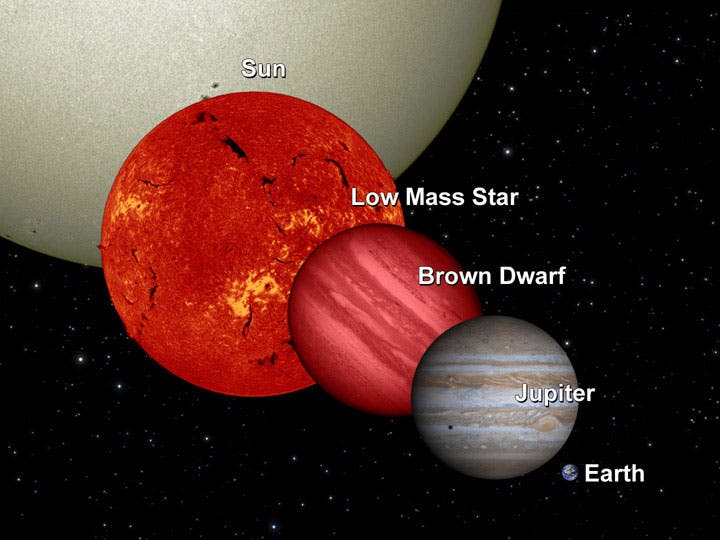Astronomers have spotted a planet 13 times larger than Jupiter, raising questions as to whether it is a planet, or rather something else.

The newly discovered object lies at the border between gas giants and brown dwarfs. Image via Wiki Commons.
NASA’s Spitzer telescope is an infrared space telescope launched in 2003. Initially meant to survive for only 2.5 years, the telescope is still running, allowing astronomers to gather useful data, especially through a technique called microlensing. In gravitational lensing, astronomers study the bending of the light caused by massive objects or clusters. Stars from the Milky Way usually serve as the lensing object. Microlensing is a type of gravitational lensing in which no distortion in shape can be seen, but the amount of light received from a background object still changes in time. The effect is small, such that even a galaxy with a mass more than 100 billion times that of the Sun will produce barely noticeable effects. However, these effects are strong enough to be noticed.

A light source passes behind a gravitational lens (point mass placed in the center of the image). The aqua circle is a source as it would be seen if there was no lens; white spots are the multiple images of the source.
The good thing about microlensing is that it does not rely on the light from the host stars; thus, it can detect planets, even when the host stars cannot be detected. This was the case with an object called OGLE-2016-BLG-1190.
The object might not sound very exciting, but it is. Astronomers estimate it to be at about 13.4 Jupiter masses. This is almost too big to be a planet; it puts it right at the limit between gas giants and a brown dwarf. In other words, we don’t know if it is a humongous planet or a failed star.
“The planet’s mass places it right at the deuterium burning limit, i.e., the conventional boundary between “planets” and “brown dwarfs”. Its existence raises the question of whether such objects are really “planets” (formed within the disks of their hosts) or “failed stars” (low mass objects formed by gas fragmentation),” the paper reads.
The deuterium burning researchers refer to is a nuclear fusion reaction that occurs in stars and some substellar objects, in which a deuterium nucleus and a proton combine to form a helium nucleus.
Deuterium fusion is what makes a star a star. Brown stars occupy the mass range between the heaviest gas giant planets and the lightest stars. They are generally regarded as sub-stellar objects not massive enough to sustain nuclear fusion of ordinary hydrogen, but still massive enough to support the fusion of deuterium.
OGLE-2016-BLG-1190Lb orbits its parent star approximately every three years, two times further away than the Earth is from the Sun. It’s the first planet discovered through microlensing from Spitzer.
Journal Reference: Y.-H. Ryu et al. OGLE-2016-BLG-1190Lb: First Spitzer Bulge Planet Lies Near the Planet/Brown-Dwarf Boundary. arXiv:1710.09974









